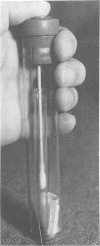Abstract
A device is described and evaluated for the anaerobic transport of clinical specimens. The device limits the amount of oxygen entering with the sample to a maximum of 2%, which is rapidly removed by reacting with hydrogen in the presence of a palladium catalyst. The viability on swabs of 12 species of anaerobes, four strains of facultative anaerobes and a strain of Pseudomonas aeruginosa, was maintained during the length of the tests (24 or 48 h). The results demonstrated that this device protected even the more oxygen-sensitive clinical anaerobes from death due to oxygen exposure. This device can be used for swabs as well as for anaerobic collection and liquid and solid specimens.
Full text
PDF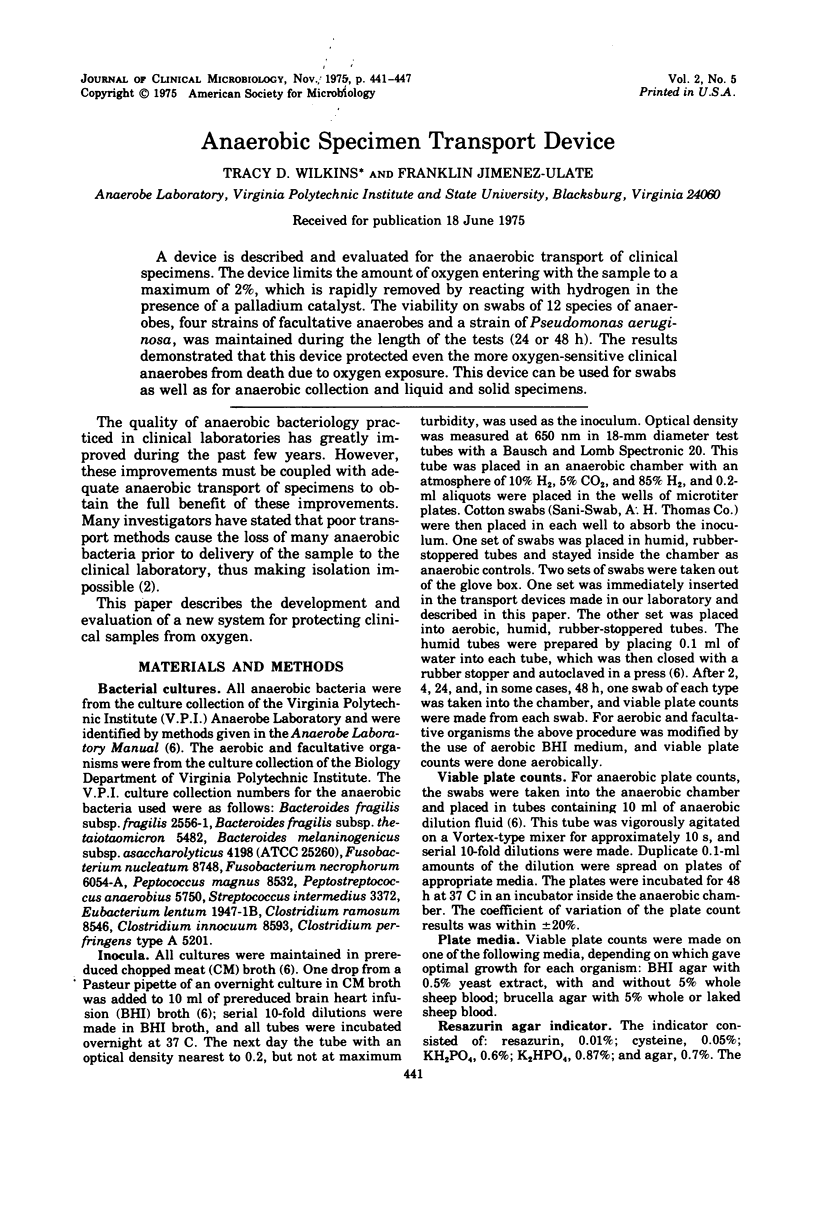
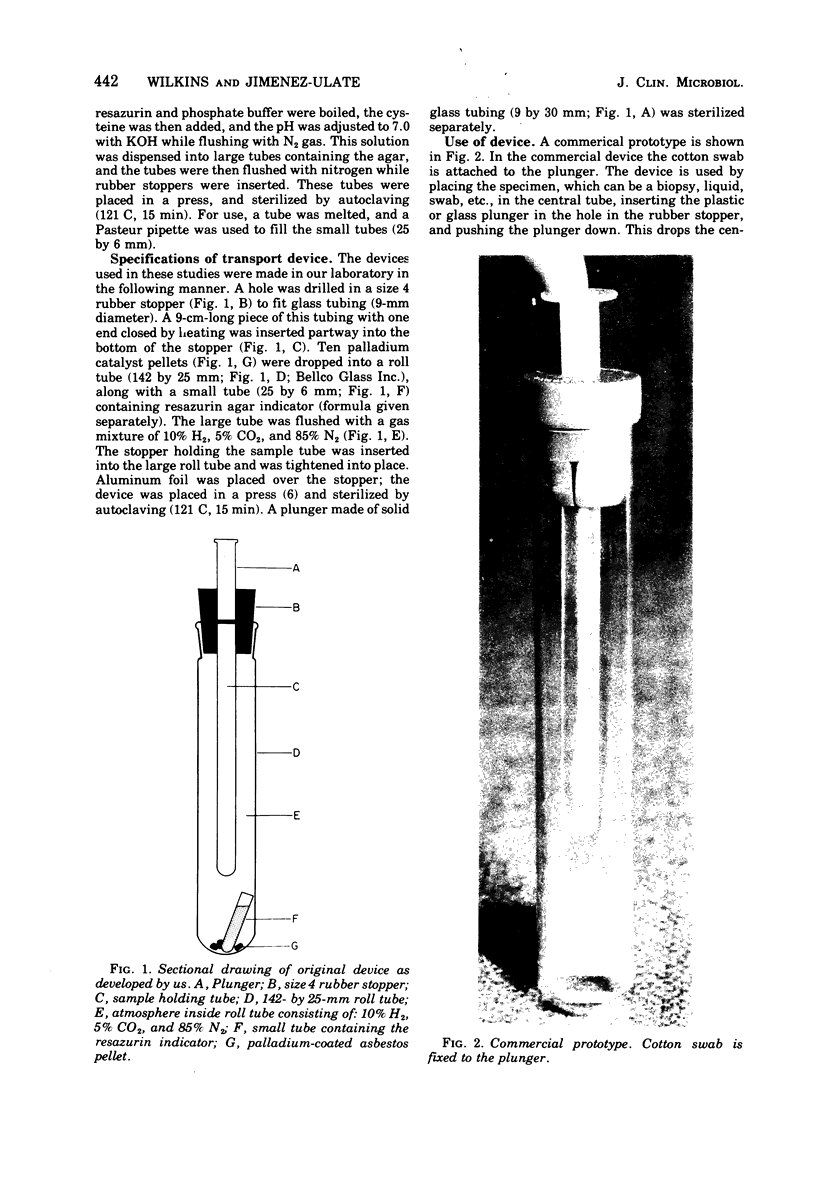
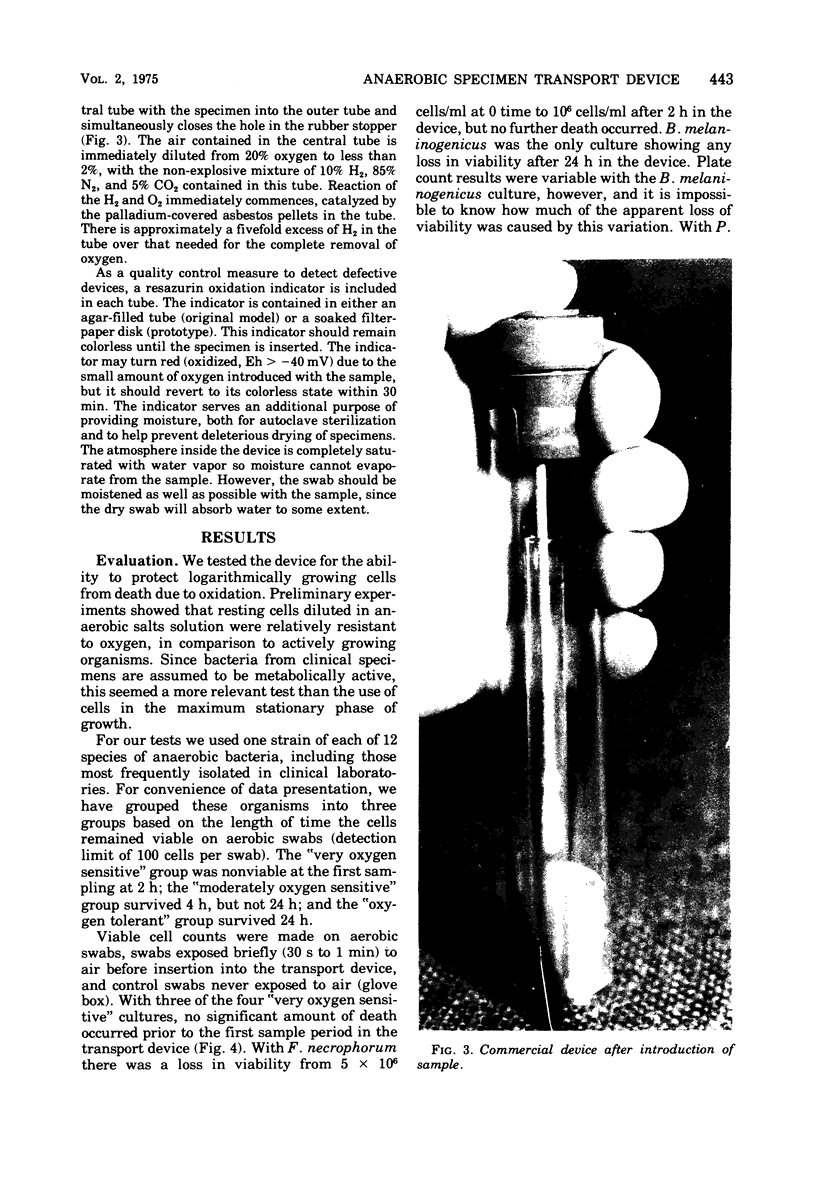
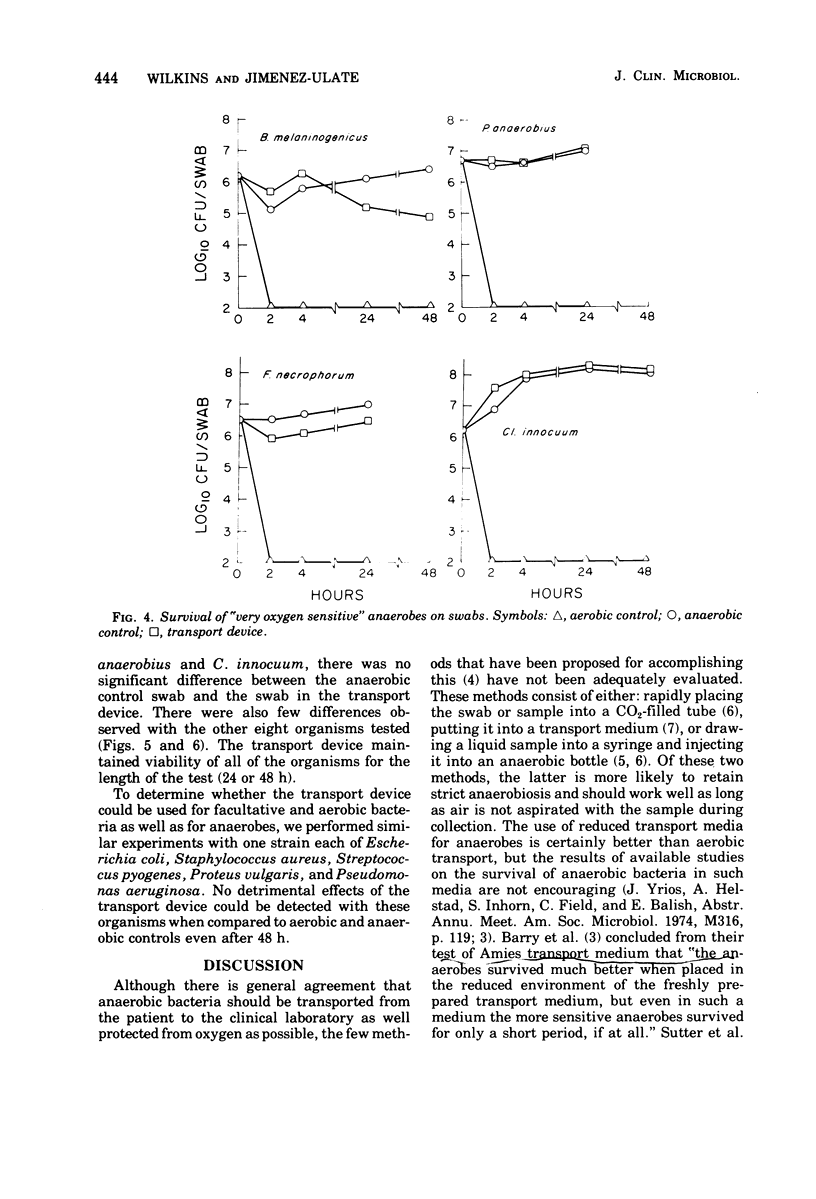
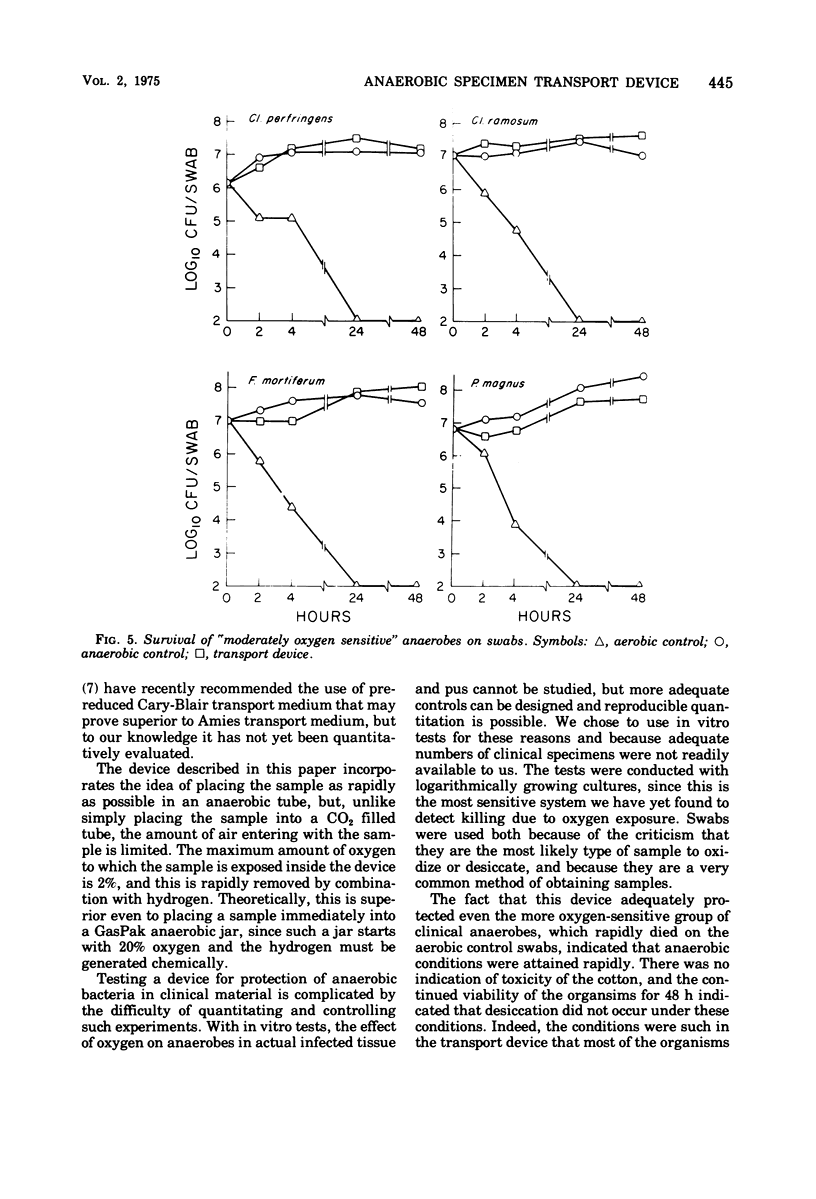
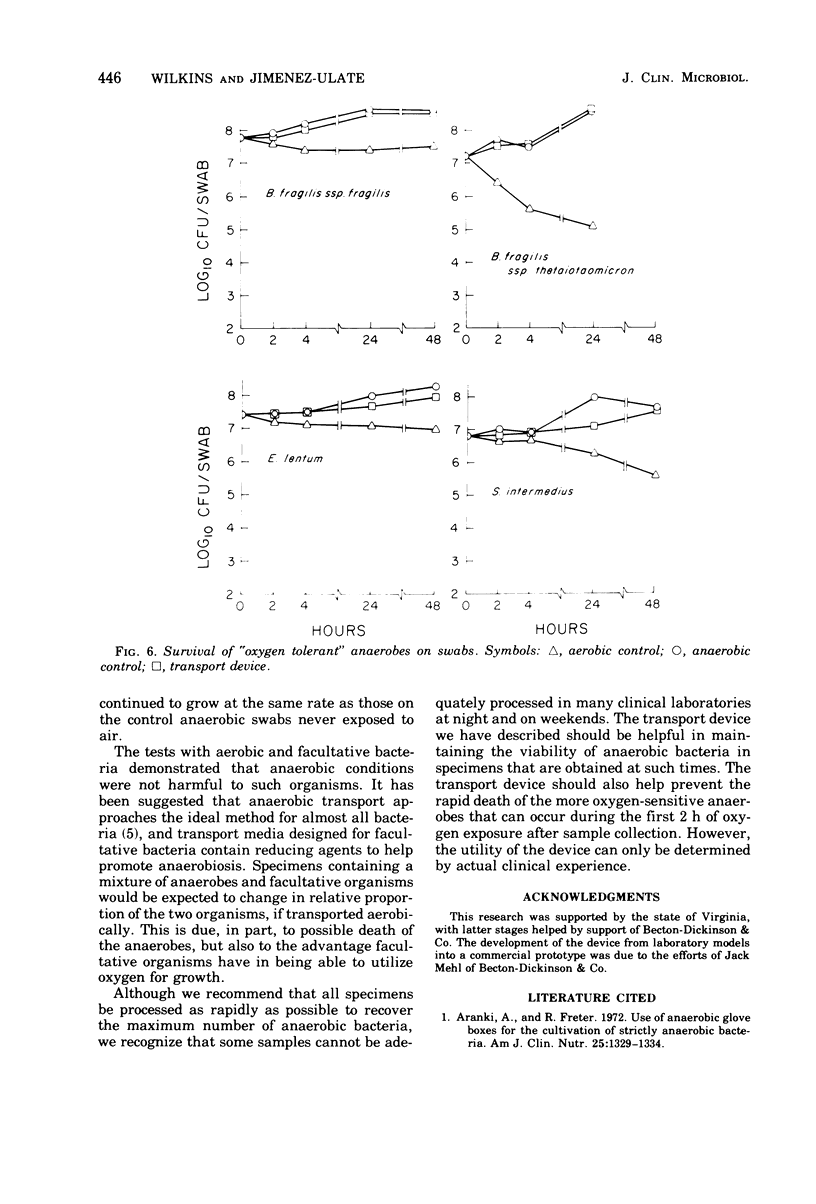

Images in this article
Selected References
These references are in PubMed. This may not be the complete list of references from this article.
- Aranki A., Freter R. Use of anaerobic glove boxes for the cultivation of strictly anaerobic bacteria. Am J Clin Nutr. 1972 Dec;25(12):1329–1334. doi: 10.1093/ajcn/25.12.1329. [DOI] [PubMed] [Google Scholar]
- Barry A. L., Fay G. D., Sauer R. L. Efficiency of a transport medium for the recovery of aerobic and anaerobic bacteria from applicator swabs. Appl Microbiol. 1972 Jul;24(1):31–33. doi: 10.1128/am.24.1.31-33.1972. [DOI] [PMC free article] [PubMed] [Google Scholar]




